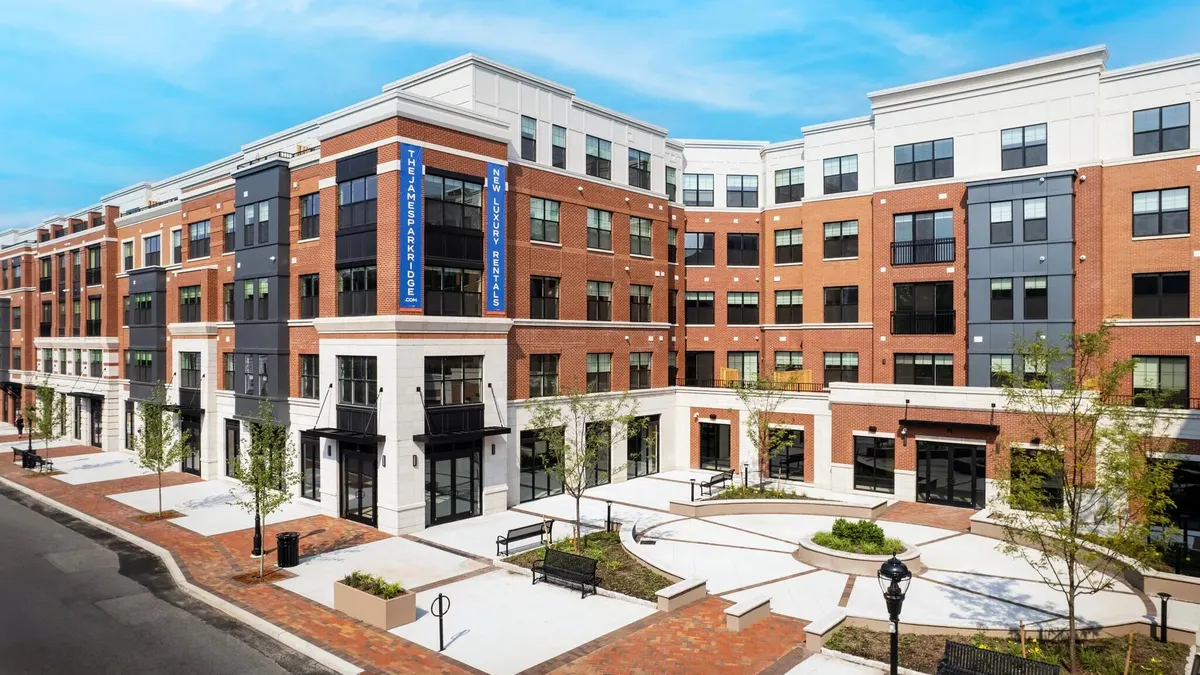When interest rates went up last year, multifamily borrowers suddenly got less money from lenders. As a result, they had to bring more money to the table to get deals done.
Instead of getting a loan covering 75% of an asset, an owner or developer may only be able to secure a loan for 65%. To make up for the difference, many borrowers are turning to preferred equity — an alternative financing mechanism structured as an equity investment rather than a loan.
“In a rising rate environment, senior lenders are sizing to lower proceeds, so preferred equity is needed to fill a gap in the market,” said Melissa Farrell, head of U.S. debt originations for Newark, New Jersey–based real estate finance and investment firm PGIM Real Estate. “Thus, preferred equity is becoming a more common strategy for borrowers, and as the transaction structure has grown in popularity, borrowers have generally become more comfortable with it.”
That isn’t the only reason preferred equity is becoming popular. Many capital providers are moving away from joint venture funds and toward preferred equity, which can be a versatile option for buyers, owners and developers.
But it comes with some risks. Preferred equity is more expensive than senior debt, and an owner is bringing another group into a deal that can potentially gain control of the property if there are problems.
“There might be certain triggers they can pull to take over [the property] and kick out the sponsorship there,” said Yonah Sturmwind, manager of specialty originations at Chicago-based Alliant Credit Union.
A JV pullback
Preferred equity might not be the first choice for many multifamily borrowers. Instead, they would usually migrate toward higher-leverage bridge loans, according to Ross Pemmerl, chief credit officer at UC Funds, a Boston-based alternative lender, a type of company that provides business loans outside of traditional banks.
But to meet the leverage requirements for banks, borrowers need to bring equity to the table. “If the leverage isn't getting there, then the pref can always get it a little bit higher,” Pemmerl said.
In the past, joint venture capital might have been an option. But Cody Kirkpatrick, managing director of New York City–based commercial real estate services firm Berkadia’s JV Equity and Structured Capital Group, said that the market has cooled.

“The joint venture equity providers out there, the household names, have really pulled back across the board and are being more selective today,” he told Multifamily Dive.
It isn’t just one source of joint venture capital that has pulled back. Kirkpatrick said it's across the board, whether it's institutions, high-net-worth syndications or others.
“Some of the crowdfunding platforms aren't raising money at the same clip that they were,” Kirkpatrick said. “Some of the private syndications are having trouble raising the money that they had been raising two or three years ago.”
Many capital providers have pivoted to the preferred equity space, where they can still get good returns.
“That doesn't mean joint venture equity can't get done,” Kirkpatrick said. “It's just more difficult and less prominent. Another reason that pref equity has risen in prominence is that the capital is flowing that way, but also the joint venture equity isn't around as much.”
A versatile option
Pref equity isn’t just an option on acquisitions. It can help fill the gap in construction deals that may not happen otherwise. It can also provide a lifeline to owners who need to refinance but must bring in outside money.
“Preferred equity can be attractive for new property acquisitions by reducing the overall [limited partnership] equity requirement, as well as for refinancings where a capital injection is needed to pay for interest rate cap costs or to otherwise provide liquidity,” Farrell said.
Preferred equity can also help sponsors avoid going back to their investors for more money. “It is less expensive than a traditional equity investment and helps sponsors avoid capital calls,” Farrell said.

In many of the deals getting done today, buyers are assuming the seller’s loans. Bringing in preferred equity can help with those types of deals as well.
“In transactions where the buyer is assuming an existing loan, preferred equity can also offer a solution that is compatible with the existing loan and provides the borrower with additional leverage,” Farrell said.
Pref equity can also work for companies that are further along in their projects, have part of their capital stack in place and are trying to fill a gap, according to Perry Freitas, managing director of New York City–based commercial real estate lending and investment firm Hudson Realty Capital. “That's the type of deal that we're pursuing,” he said.
Click here to sign up to receive multifamily and apartment news like this article in your inbox every weekday.


















